Media | Articles
E 60 AMG: Behind the Wheel of a Bad-Boy Benz
The rise of ’80s and ’90s cars has been one of the most talked-about phenomena of the last decade in the collector car market. Japanese cars like the NSX, Skyline GT-R, and Toyota Supra Turbo have led that charge, but we’ve also been paying close attention to cars from a more niche outfit from the same era: AMG. Home of Germany’s most intimidating hot rods, AMG has its roots in racing but helped deliver some of the most exciting and exclusive road-going performance machines of the era. Our recent drive of the W124-generation E-Class super sedan, known as the E 60 AMG, confirms what many collectors are starting to understand—such pre-merger AMGs represent two companies at the peak of their powers, whose joint forces created machines of exquisite class and character.
As Mercedes-Benz’s now fully in-house performance arm, the AMG brand is emblazoned on vehicles throughout the automaker’s current lineup. Up until 1999, however, AMG was an independent tuning house whose high-horsepower handiwork blessed only a small handful of Mercedes vehicles. AMG came to public prominence by modifying Mercedes cars in the mid-’80s, and the two companies’ collaborations over the next decade or so largely amounted to tiny production runs. The most famous of these cars, an E-Class born in 1986 with a 5.0-liter AMG-built V-8, was rightfully dubbed “the Hammer.” Packing 355 hp and 388 lb-ft of torque, the Hammer combined contemporary supercar performance with the kind of luxury, comfort, technology, and practicality that made Mercedes such a dominant force in the 1980s. Car and Driver hit the nail on the head when it said that “AMG crafts [the car] to pound everything else flat.”

The E 60 AMG came later, for the 1994 and ‘95 model years, using the Porsche-developed E500 sedan as its foundation. Though lesser-known than the Hammer, it is no less impressive. The process began with a customer ordering an E500 (so called beginning in ‘94, before which it was known as the 500E). If the customer was willing to spend about $22,000 in today’s dollars for the “957” option code, the W124 chassis—which had already visited a Porsche assembly line in Zuffenhausen as well as Mercedes’ own Sindelfingen factory for paint—would be sent roughly 30 km farther north to AMG’s factory in Affalterbach. There, in the process of becoming an E 60 AMG, it would receive a hand-built 6.0-liter V-8 good for a whopping 375 hp and 428 lb-ft of torque. The 957 “AMG Technology” pack also delivered suspension upgrades—sway bars, springs, and dampers—plus three-piece, 17-inch “Aero III” wheels and an AMG exhaust with polished twin square tips.

Record-keeping from this era at Mercedes and AMG is infamously sparse. Most agree that 45 examples of the E 60 AMG were built between September of 1993 and November of 1994. The price: $108,700 in total, which amounts to $236,300 today. Virtually all of these cars are thought to have come with option code 958, signifying the “Limited” appearance package also available on late-model E500s. Original 958 kit included 17-inch forged aluminum wheels from the Mercedes 190E Evo II, plus fun two-tone black/gray leather trim for the seat centers, steering wheel, gear shift knob, and owner’s manual pouch.


From the outside, this Sapphire Black Metallic E60 AMG looks downright sinister. The three-piece, painted wheels and subtle chrome exhaust tips add a dose of ‘90s flash, but the Bruno Sacco-designed exterior is otherwise unspoiled. In its simplicity, there is purpose—the proportions of the W124-chassis Mercedes are timeless, but the 1.5-inch wider track and 0.9-inch lower stance lend a sense of power in restraint.
Marketplace
Buy and sell classics with confidence
Pops of color and pattern aside, the genius of this interior owes more to Mercedes and the W124 than anything from AMG. The layout is clean, simple, logical. Gauges are clear and legible, with nothing to distract from the road ahead. From the driver’s seat, you get the sense of being in the centrally located between the front and rear of the car, so though the W124 feels substantial in size, it’s easy to judge and negotiate in traffic. Outward visibility is excellent, thanks largely to a cowl and beltline that seem low compared with modern cars. Everything about this cabin speaks to a balance between order and generosity, from the sensibly organized center stack to the pleasantly roomy back seat. It’s easy to see why E-Classes from this era are some of the most beloved taxis, fleet cars, and executive sedans ever made.




Though thirty years have passed since the E 60 AMG’s arrival, the car drives with a confidence and assuredness that is decidedly ahead of its time. Power is most robust in the mid-range, but the 6.0-liter V-8 growls happily no matter where the tach needle is pointing. It never beats you over the head with thrust, noise, and vibration like today’s AMG V-8s, but the E 60 nevertheless feels fast and authoritative. At the same time, it isn’t in a hurry—the four-speed automatic transmission takes a moment to settle itself and kick down if you suddenly prod the gas pedal toward the end of its travel. When power arrives it’s always smooth, urging the car forward but never upsetting the chassis or its passengers.
This is a car with no interest in showing off, despite its immense capability. If you remember David Robinson, the Navy-veteran star center of the San Antonio Spurs in the ‘90s, the E 60 AMG is a bit like his game—disciplined, determined, and unshakeable because of its strong fundamentals. You notice this most in high-speed bends. The E 60’s body leans and rolls when rushed into corner, but the tires have no trouble digging in and finding grip. Road-holding is excellent, even under heavy exit throttle, while the steering remains light and precise throughout. The nicely sized helm can feel a touch vague as the hydraulic booster works hard at parking-lot speeds, especially just off center, but it otherwise comes across as natural. More surprising is the automatic gear shift, which has a welcome lightness to it as it glides through neutral and reverse and into drive. However intimidating the E 60 AMG may seem from afar, it’s much more approachable and friendly than you’d expect.

Market data indicate that such “pre-merger” AMGs—including the Hammer, 500 SEC, C 36, and SL convertible—are finding increasingly willing suitors at public auction lately. The density of dots in the chart below shows a much higher volume of auction sales in the last two years than in the four before preceding them. “We see the biggest price spread among Mercedes/AMG models with the E-Class, in particular because of the desirability of the Hammer coupes and sedans,” says Hagerty Manager of Data Analytics John Wiley. During the pandemic, this model commanded a handful of eye-popping results above estimate and north of $750,000. (At The Amelia in 2023, Broad Arrow sold a Hammer sedan for $775,000 and a coupe for $885,000.)
E 60s are not quite in the same territory, but their rarity and relative novelty at public auctions makes comprehensive data hard to come by. Wiley notes that these cars appear to be worth roughly three times the equivalent E500. The car we drove for this article previously appeared with a $250,000–$300,000 estimate at Broad Arrow’s Amelia 2024 auction, where it did not sell. It carries the same estimate as it heads into Broad Arrow’s 2024 Monterey sale.
In our data analysis of the pre-merger AMG market back in February, managing editor Eddy Eckart noted how the right car can bring the right buyers out of the woodwork. “Given the increase in popularity of these collector AMGs, more are beginning to come to market, and the buyer knowledge base is beginning to grow.
“Buyer demographics skew quite young for pre-merger AMGs, almost surprisingly so. According to our policy data, about 52 percent of early AMG cars (pre-C36) are owned by millennials. Another 34 percent are owned by Gen X, and just 14 percent are owned by baby boomers.”

Those young demographics suggest a bright future for these rare and special German hot rods, but it’s the cars in great condition and with proper documentation that will garner the most interest. Many 500Es and E500s, for instance, were not equipped with the 957 option package from the factory but nonetheless received 6.0-liter AMG V-8s and the like after the fact. (Such cars were especially popular in the Japanese market.) Some of this work was, allegedly, even performed by AMG itself.
The partnership between AMG and Mercedes grew much closer with the latter’s majority stake in 1999, ending with outright ownership in 2005. The E 60 marks as moment when these two distinct companies were inching closer together in pursuit of a common goal. The E 60 AMG is rare not just because of its low production volume but also because of the rich driving experience that comes from said collaboration—the mixture of muscle machine and luxury express exists here in balance. That W124s—from base models all the way up to the E 60—still generate respect from Mercedes fans is a testament to the legacy of this generation of E-Class. At the top of this hierarchy, though, the E 60 brings a special dose of strength and sophistication.










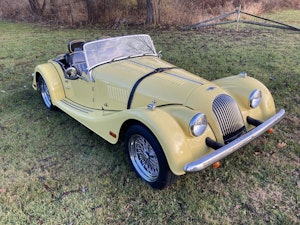
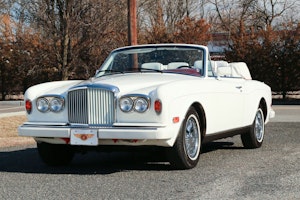
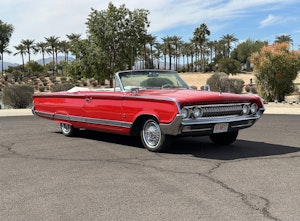
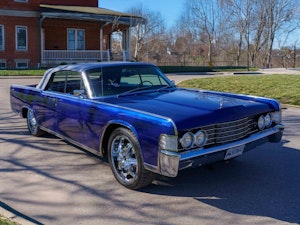

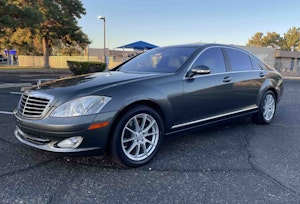
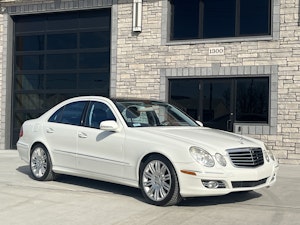
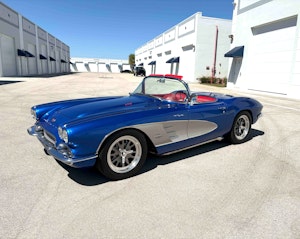






















These classic hot rod Mercedes look so good. I remember one of these back in the day making some great noises.
Great to see these German powerhouse cars finally get the mainstream attention they deserve.
Great makes have their peak eras, and in the 80s & 90s, it was Mercedes-Benz and BMW.
The tuner shop specials, such as AMG, Brabus, Koenig, and others, made some interesting cars even more amazing.
IMO, Mercedes instrumentation of this era was peak analog dash technology. It’s still better than what most cars offer today, and it would be nice if Mercedes offered this type of display as an option on their current screens.
As a W124 owner I always lusted after a 500E but had to settle for a 1992 400E. It was powerful enough for me, and with wider wheels and tires it handled superbly for a pretty big sedan. The 4.2 liter V-8 was powerful and moved that car along nicely. The M119 engine was remarkably durable, lasting during my family’s ownership for more than 230,000 miles without anything but routine servicing. Same for the transmission and differential. The 400E was produced in much greater numbers, and it was a true “sleeper” on the road. Not the fastest off the line but it gained speed rapidly. I miss that car. Of course the AMG treatment would have been spectacular. I can attest to AMG’s magic with V-8s as a current owner of a 2005 CLK55 convertible.